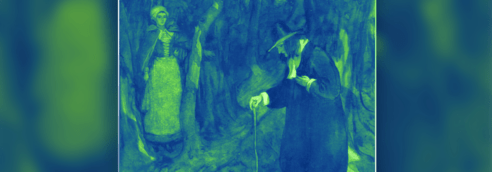Overview
This lesson helps students understand the role of symbols in The Scarlet Letter and how they contribute to a deeper understanding of the characters’ motives and actions. The activities and conversations throughout will lead students to consider Hester’s journey in light of the Declaration’s principle of unalienable rights—specifically the rights to life, liberty, and the pursuit of happiness. The relationships between Hester, Pearl, and Dimmesdale will be analyzed as students interpret the ways that Hester’s story reveals a deeper understanding of the themes of equality and unalienable rights as perceived by Nathaniel Hawthorne. Students will practice cognitive empathy and critical analysis as they develop an essay that synthesizes their thoughts about The Scarlet Letter and the Declaration of Independence.
Note: This lesson is the 3rd in a 4‑lesson series.









